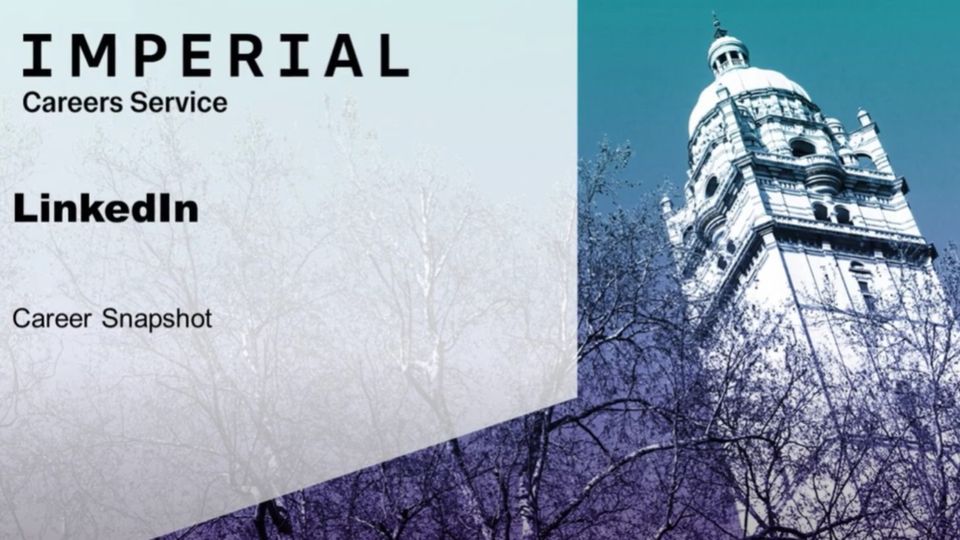LinkedIn is one of the world’s largest professional networking sites for making meaningful career connections.
Your profile can evidence your skills and experience just like your CV, and once you’ve created a profile you can start to explore data from over 750 million users; essentially you have access to view all these profiles and gain career inspiration and insight!
LinkedIn is used by many students but only a few really know how to harness its power. Our resources will help you to develop a professional online identity and meaningful connections.
LinkedIn tabs
- Build your profile
- Make connections
- Develop your network
- Professional etiquette
- Additional resources
Your LinkedIn profile is a webpage to help you manage your professional brand. Like a CV, it’s a great way to tell the world who you are and to display your experiences and achievements. When building your profile, it’s a good idea to apply the same general rules that we use for CVs and to try to write in concise, action orientated, statements. It’s also important to fully complete your profile and to keep it up to date. If you have a specific career path in mind you can tailor the language and skills to match; just like on a CV!
Your LinkedIn profile can contain many sections to help structure the content and make it more accessible. Below are some top tips for commonly used sections.
Headline. By default, this is set as your most recent experience, but you can edit this to make an impact. You have 120 characters to highlight who you are. It should be fact based and avoid cliché phrases. Try to say who you are, something about yourself and why you’re on LinkedIn. For example, “Physics student at Imperial College with excellent numeracy and coding skills. Seeking a finance summer internship.” (115 characters).
Your photo and background image. It’s generally expected that your LinkedIn profile will contain your photo (unlike a UK CV). You should be the only person in the photo, and you should be central to the frame and looking at the camera. Your background image can reflect something personal to you. Many people choose a cityscape or photo of their university campus, hometown or place of employment.
About. This is a summary statement that allows you to expand on you ‘headline’ and highlight key experiences or skills. It can be useful to use bullet points to help format your text and remember this is a summary not a thesis so 100 to 250 words is probably sufficient.
Education. Your most recent education should appear first and previous education lower. It’s also sensible to add some descriptive text that outlines the subjects studied or activities involved.
Experience. This section can include internships, employment (including part-time jobs), freelance work or volunteering. You should provide some details about your duties, responsibilities, or achievements for each entry.
Volunteer experience. Enter any unpaid positions here including students’ union activities within clubs and societies but be sure to add some descriptive text too.
Skills and endorsements. LinkedIn allows you to select up to 50 skills to display and then people in your network can vote if they agree you possess the skill. The data here helps drive the search algorithms LinkedIn.
Recommendations. LinkedIn permits other members to recognise your achievements by writing a short commendation of your work. These can help add depth to your profile and can act as validation for the skills and credentials you’ve put on your profile. Recommendations help to complete your profile and can increase your ranking in search results.
Accomplishments. You can populate your profile with projects, publications, patents, awards, and online courses etc. Each item can be linked to when it took place, and you can link with others that collaborated or contributed too.
Interests. LinkedIn enables you to join groups, follow organisations or ‘influencers’ and to join community groups. This is useful o show what you’re genuinely interested in, but it can help you develop commercial awareness, meet new people and open the door to the hidden job market.
